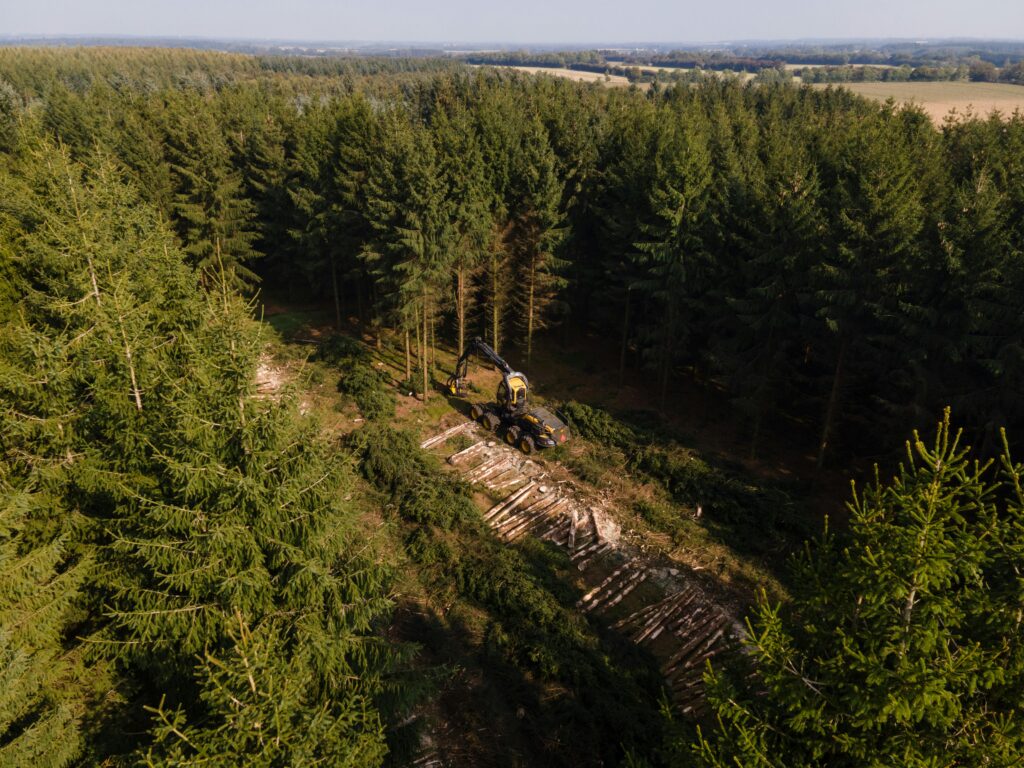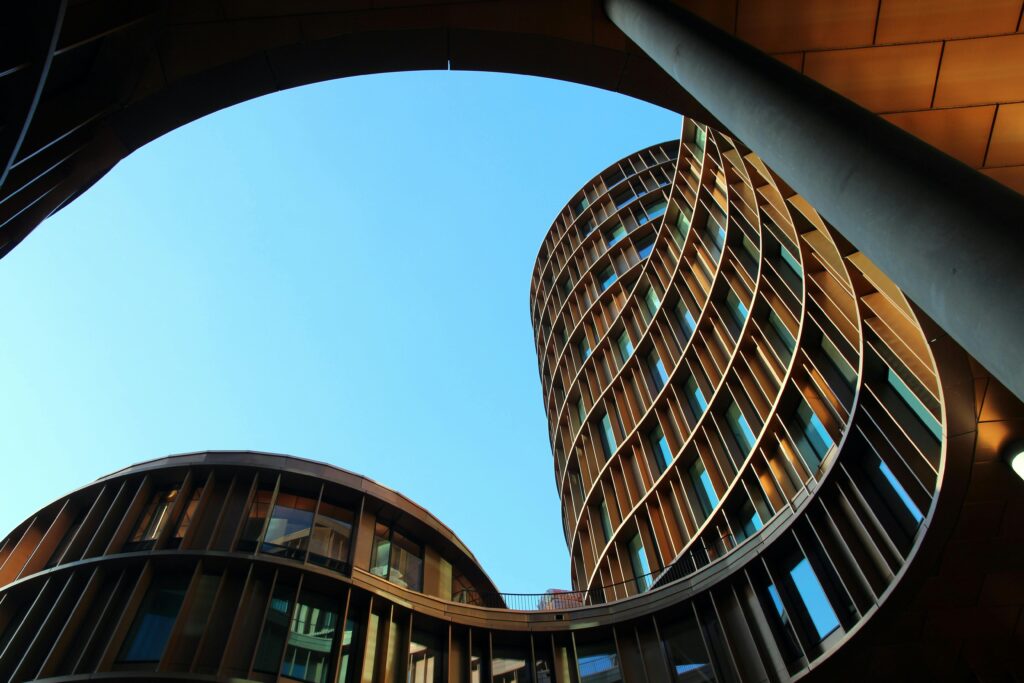A recent archaeological discovery in Denmark has captured the attention of researchers and history enthusiasts alike—a colossal timber circle dating back roughly 4,000 years, making it nearly contemporaneous with Britain’s famed Stonehenge. This remarkable find not only deepens our understanding of prehistoric ceremonial practices but also challenges our views on the ingenuity and cultural sophistication of ancient Northern European societies.

A Window into Prehistory: The Discovery and Excavation
In the heart of Denmark’s rich archaeological landscape, experts uncovered a timber circle using a blend of modern techniques and traditional fieldwork. Advanced aerial surveys, geophysical methods such as ground-penetrating radar, and meticulous excavation efforts revealed a structure that spans an impressive area. Unlike the monumental stone constructions seen elsewhere, this wooden edifice provides a unique glimpse into a time when timber was a primary building material. Detailed analyses—including dendrochronology (tree-ring dating) and radiocarbon methods—have confirmed the structure’s age, situating it around the same period as Stonehenge.
Architectural Features and Construction Techniques
The timber circle is a marvel of prehistoric engineering. Constructed from robust logs—likely chosen from species such as oak or ash for their durability—the structure was arranged in a precise circular pattern. Although the full layout is still under investigation, initial findings suggest the circle may have included a central clearing or platform, hinting at its use as a communal gathering or ceremonial space.
Key aspects include:
- Materials & Selection: The builders demonstrated considerable skill in selecting and preparing timber. The natural durability of the wood, coupled with early methods to treat or position it for longevity, underscores a sophisticated understanding of local resources.
- Construction Precision: The circular layout indicates a planned design, possibly aligned with astronomical events such as solstices or equinoxes. Such alignment would have served not only as a calendar but also as a means of connecting the community with the cosmos.
- Engineering Insight: The sheer scale and precision of the circle reveal that its creators possessed advanced knowledge in both planning and construction—a trait that challenges the simplistic views of “primitive” prehistoric communities.
Cultural and Ritual Significance
Timber circles like the one discovered in Denmark likely served as more than just architectural feats; they were central to the ritual and social lives of their builders. Although interpretations continue to evolve, several theories have emerged:
- Ceremonial Hub: The layout suggests a space for gatherings, possibly for religious ceremonies, community decision-making, or seasonal festivals. Much like Stonehenge, this structure could have been used to mark significant astronomical events.
- Symbolic Connection: Trees held deep symbolic meaning in many ancient cultures, representing life, growth, and the connection between earth and sky. Building a monument out of timber may have been a deliberate act to honor these natural forces.
- Social Cohesion: The organization required to construct such a site hints at a structured society capable of complex planning, resource management, and communal effort. The circle, therefore, may also have been a focal point for social hierarchy and cultural identity.

Broader Implications for Prehistoric Europe
This discovery adds an intriguing layer to our understanding of prehistoric monument construction. While Stonehenge is famed for its massive stone blocks and precise astronomical alignments, the Danish timber circle demonstrates that different regions explored alternative materials and methods to achieve similar cultural and ritual objectives. Key broader implications include:
- Regional Variations in Monumentality: The use of timber rather than stone highlights the adaptability of ancient societies to their environments and available resources.
- Interconnected Cultural Practices: Despite differences in construction materials, parallels in design and purpose suggest possible cultural exchanges or shared ideological frameworks across regions in Europe.
- Advanced Prehistoric Engineering: The precision and scale of the timber circle reveal that these ancient builders were far more technologically and socially sophisticated than previously assumed.
Uncovering Hidden Layers: Additional Insights
Beyond the basic facts, several details contribute to a more nuanced understanding of the site:
- Environmental Context: In the prehistoric landscape, dense forests were common, and the selection of timber might have been influenced by both availability and cultural reverence for woodland spaces. The circle may have stood at the edge of a sacred grove or a significant natural landmark.
- Ongoing Research: Archaeologists are now exploring nearby areas for complementary features such as burial mounds, artifact scatters, and other structures that could form part of a larger ritual complex. Future studies involving isotope analysis and micro-excavation techniques promise to shed more light on the origins of the timber and the people who built the circle.
- Comparative Studies: By comparing this timber circle with similar structures in other parts of Europe—such as Britain’s Woodhenge—researchers are beginning to map out a broader narrative of prehistoric monument construction and cultural expression, offering fresh insights into the shared human quest for meaning through monumental architecture.

Frequently Asked Questions (FAQ)
Q1: How old is the timber circle discovered in Denmark?
A1: The structure is approximately 4,000 years old, placing it around the same period as Stonehenge.
Q2: What was the timber circle used for?
A2: While interpretations vary, it is widely believed that the circle served as a ceremonial or ritual space—possibly for communal gatherings, religious ceremonies, or to mark astronomical events.
Q3: How was the site discovered and dated?
A3: The discovery was made through a combination of aerial surveys, geophysical surveys (like ground-penetrating radar), and careful excavation. Dating methods such as dendrochronology and radiocarbon analysis were used to determine its age.
Q4: What materials were used in the construction of the circle?
A4: The structure was built using sturdy timber, likely including oak or ash, which were valued for their durability and symbolic significance.
Q5: How does this timber circle compare to Stonehenge?
A5: While Stonehenge is constructed of massive stone blocks, the Danish timber circle highlights an alternative approach using wood. Both share common themes of astronomical alignment and ritual significance, showcasing the advanced engineering and cultural practices of their respective societies.
Q6: What future research is planned for the site?
A6: Ongoing studies aim to explore the surrounding area for additional archaeological features, perform detailed analyses of the wood used in the structure, and further investigate the social and cultural context of the society that built the circle.
The discovery of Denmark’s timber circle not only enriches our understanding of prehistoric engineering and ritual practices but also serves as a compelling reminder that ancient societies were both innovative and deeply connected to the natural world. As research continues, this monumental find promises to reveal even more about the lives, beliefs, and ingenuity of our distant ancestors.
Sources Live Science


